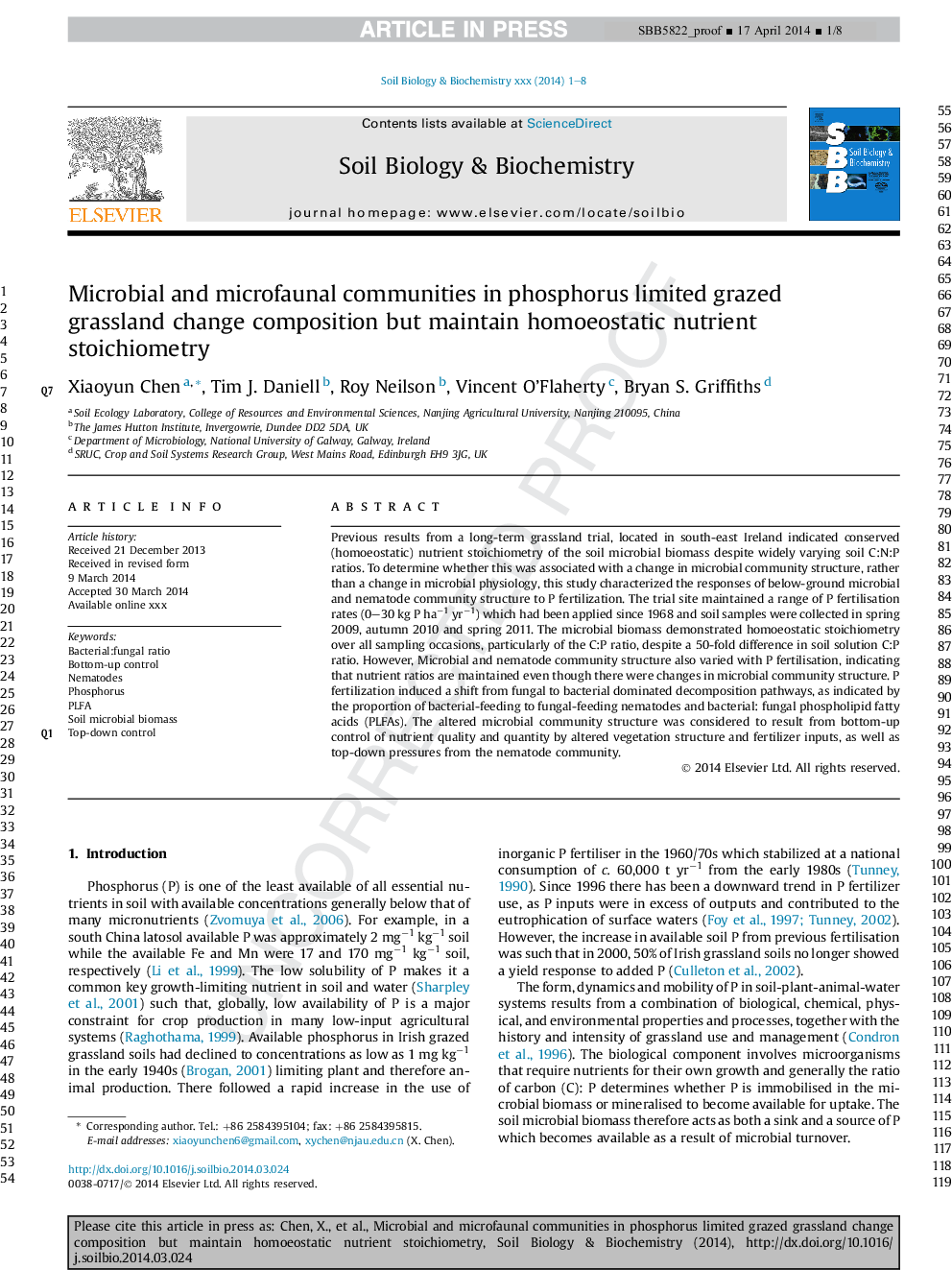| Article ID | Journal | Published Year | Pages | File Type |
|---|---|---|---|---|
| 8364708 | Soil Biology and Biochemistry | 2014 | 8 Pages |
Abstract
Previous results from a long-term grassland trial, located in south-east Ireland indicated conserved (homeostatic) nutrient stoichiometry of the soil microbial biomass despite widely varying soil C:N:P ratios. To determine whether this was associated with a change in microbial community structure, rather than a change in microbial physiology, this study characterized the responses of below-ground microbial and nematode community structure to P fertilization. The trial site maintained a range of P fertilisation rates (0-30 kg P haâ1 yrâ1) which had been applied since 1968 and soil samples were collected in spring 2009, autumn 2010 and spring 2011. The microbial biomass demonstrated homeostatic stoichiometry over all sampling occasions, particularly of the C:P ratio, despite a 50-fold difference in soil solution C:P ratio. However, microbial and nematode community structure also varied with P fertilisation, indicating that nutrient ratios are maintained even though there were changes in microbial community structure. P fertilization induced a shift from fungal to bacterial dominated decomposition pathways, as indicated by the proportion of bacterial-feeding to fungal-feeding nematodes and bacterial: fungal phospholipid fatty acids (PLFAs). The altered microbial community structure was considered to result from bottom-up control of nutrient quality and quantity by altered vegetation structure and fertilizer inputs, as well as top-down pressures from the nematode community.
Related Topics
Life Sciences
Agricultural and Biological Sciences
Soil Science
Authors
Xiaoyun Chen, Tim J. Daniell, Roy Neilson, Vincent O'Flaherty, Bryan S. Griffiths,
